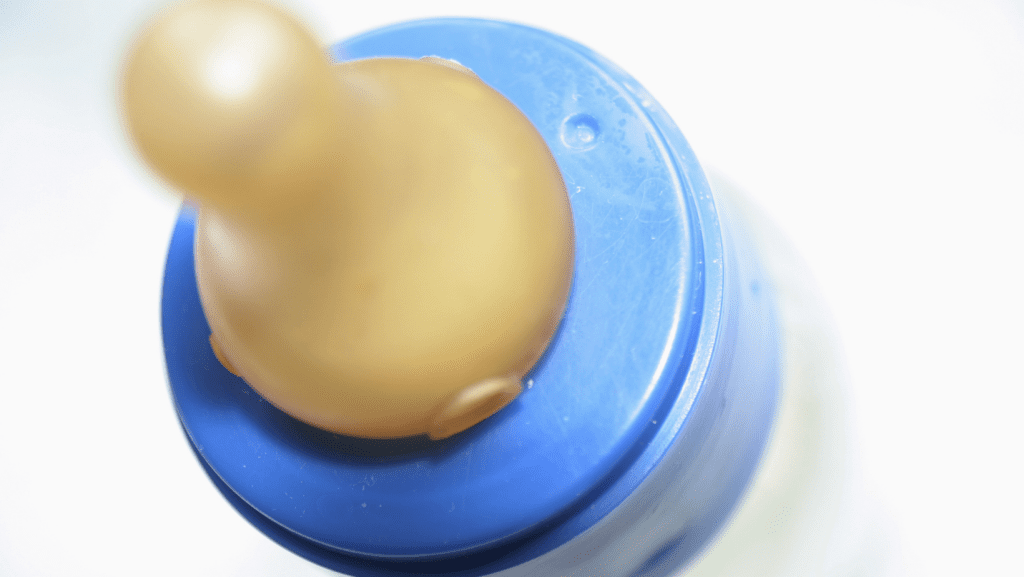
For anyone who isn’t aware, lactation consultants are not anti-bottle feeding. We are always pro-babies, and pro-mothers/parents. There are many very good reasons why you may be combination feeding, fully bottle feeding, or even considering bottle feeding. I don’t judge you for any of them. I don’t know your story, and this is not the post to discuss how to save breast feeding from disaster or the age-old psychology of breast vs bottle feeding.
If you need help with breastfeeding, there is plenty of available information on these blogs if you explore, including this one on triple feeding. For now – whatever is in your bottle that you are lovingly feeding your baby with, let’s dig a little deeper.
In our culture, we see hundreds of babies being bottle-fed. This has become our education in how to feed a baby. We may have observed friends, family members, nannies or even health professionals feeding babies in ways that are now considered stressful or not evidence-based. In fact, I vividly remember (with shame) trying to bottle-feed very young babies whilst I was a paediatric nurse on the wards. Nobody had ever given me any instruction on how to read an infant’s body language or observe for feeding cues during a bottle feed. We calculated milk volumes based on the baby’s weight, divided the daily total by the number of feeds, and the only real pressure was to ensure the baby drank the lot. It rarely occurred to anybody that the infant may want to comfort feed sometimes, or may have times of increased or decreased hunger. We largely didn’t stop to think that babies do not always have an internal feeding clock. It makes me shudder to remember it.
What I’m talking about is scheduled gravity feeds. Gravity feeding is where the baby is held lying back, and the bottle held pointing almost vertically downwards, like this picture on the left. In this position, the baby will gulp and swallow rapidly, finishing the bottle very fast, and probably drinking more than they should. When milk is pouring into a baby’s mouth rapidly, they basically have 3 options: drink, drown or dribble. Babies are smart, so they usually pick option 1 or 3 – drinking or dribbling. If you notice any of the following signs, the baby you are feeding is probably stressed by rapid milk flow:
- A ‘surprised’ wide-eyed expression
- Frown lines on their forehead
- Squirming, or turning their face away
- A milk-soaked bib
- Clenched fists during the feed
- Avoidance of eye contact
- Lots of gulping
The above signs are often misinterpreted as hunger. In fact, I’ve lost count of the number of people who felt guilty that they were ‘starving’ their baby because of the way they then consumed their bottle. In actual fact, their baby was just trying to cope with rapid milk flow. We see this type of feeding so frequently, that it has become normalised.
This is not a parent’s fault. I apologise to every baby, and every parent whom I have ever cared for in this way, in the mistaken belief that this was good practice. For the best part of 12 years, since I started studying for my IBCLC credential, I have been working hard to help people understand infant body language, and to do this better. In 2012, the Baby Friendly Initiative published updated standards which include some information about bottle feeding. This is a positive step, which is welcomed by parents and professionals, so that parents are no longer left in the dark when it comes to bottle feeding their baby. In fact, I really enjoy teaching health and baby-care professionals about the correct way to bottle feed.
So, what is the correct technique? Well, it’s a style of feeding called ‘paced bottle feeding, and you can watch an excellent video here . Essentially, you are holding the baby and the bottle the opposite way around – baby upright, and bottle horizontal. Like this:

Baby is held close to the parent
Eye contact is maintained
The tip of the bottle teat is full of milk, but the entire base of the teat does not need to be full
The care-giver observes the baby for signs of stress, or that the baby needs to pause to breathe, swallow, or just enjoy hanging out
The feed should take at least 10-15 minutes minimum, and the baby should be allowed to stop the feed when he is full, and not encouraged to finish the bottle
Feeding is a gentle, nurturing, and relational activity, and should always happen in the arms of a loving parent or carer. Any product that allows for hands-free bottle feeding is not respectful of the all-important parent0-infant bond. Feeding sets the tone for eating habits for life, and outsourcing this activity, or treating it as a ‘task’ is deeply sad for both parents and babies.
Common questions…..
There are no doubt many people reading right now who are hyperventilating! Don’t panic my friends! Honestly, this works.
Won’t my baby get gas this way?
Fair question. It seems logical, doesn’t it, that not having a teat absolutely full of milk will cause a baby to swallow air? Except that the most common reason babies get gas, wind, or colic, is because they are gulping and gasping during a feed that is too fast. As a paediatric nurse, I was taught early on that babies are ‘obligate nose breathers’ – in plain English this means they preferentially breathe through their noses. This is pretty clever if you think about it, because that means they can feed and breathe at the same time. Cunning. So, your baby will be drinking calmly from the bottle, and able to breathe through her nose. She is not breathing in and out through her mouth on that bottle teat. When you watch your baby closely, you’ll soon be able to figure out when she needs to pause and take a breath. You’ll notice that she does not suck on an empty teat, she will just hang out, blinking her little eyes, and swallowing while she catches her breath. If anything, you will probably find that your baby has less wind this way. Go on – give it a go!
Won’t my baby become a ‘snacker’
Babies who are bottle fed have fluctuating appetites, just like breast-fed babies. Sometimes they seem really hungry, and other times they may just want a ‘drink’. It’s perfectly ok for babies to feed like this. If you need some justification, bottle-fed babies do not get a building up of a hormone called leptin which gives breast-fed babies that signal that they have had enough. This is not about breast or formula feeding, this is to do with the mechanism of bottle feeding. Even when a baby is being bottle-fed with expressed breast milk, they tend to drink more, because they do not get the chemical trigger to finish. So we have to help bottle-fed babies manage their appetite, to prevent over-feeding. You’ll soon get to know your baby’s unique style, appetite and feeding personality. Some parents find that keeping track of their baby’s daily feed volume helps them to feel more confident, whilst many others find this stressful. Whatever works for you is fine.
How can I be sure my baby is getting enough milk?
This is also a fair question! By trusting your baby, and allowing him to be in charge of how much milk he drinks in one go, you are letting go of a lot of control. This can be scary! Breast-feeding mothers worry about this as well, and the advice I would offer is the same. Watch your baby, watch their nappies, and as long as they are gaining weight, they are getting on fine. If you find yourself wondering and becoming stressed by how much milk your baby is drinking, try putting a sock over your baby’s bottle so you can’t see the contents, and just watch your baby, rather than the volume going down!
Feeding a baby is one of the loveliest parts of parenting. When it is causing the parent or baby stress, it is time to review whether there is a more respectful way. By practicing paced bottle feeding, and bottle feeding responsively, matching our feeding technique with our baby’s feeding cues, and allowing them to be more in-control of the feed length, style and volume, we are well on the way to enjoying a close, loving relationship during feeding.
Lyndsey Hookway is a paediatric nurse, health visitor, IBCLC, holistic sleep coach, PhD researcher, international speaker and author of 3 books. Lyndsey is also the Co-founder and Clinical Director of the Holistic Sleep Coaching Program, co-founder of the Thought Rebellion, and founder of the Breastfeeding the Brave project. Check Lyndsey’s speaker bio and talk brochure, as well as book her to speak at your event by visiting this page. All Lyndsey’s books, digital guides, courses and webinars can be purchased here, and you can also sign up for her free monthly newsletter here.

[…] Did you decide you’d rather your baby had a dummy than sucked their thumb? Did you move from bottle to breast or use a nipple shield? There are SO many reasons why you may have started. Whether […]
[…] successfully the baby will breastfeed later on. Have a read of my earlier blog on bottle feeding here, and try watching this video made by a colleague of mine, Wendy Lever […]
[…] you really do need to bottle feed your baby, then check my earlier blog on how to do this. There is a selection of protocols from the academy of […]
[…] you really do need to bottle feed your baby, then check my earlier blog on how to do this. There is a selection of protocols from the academy of […]